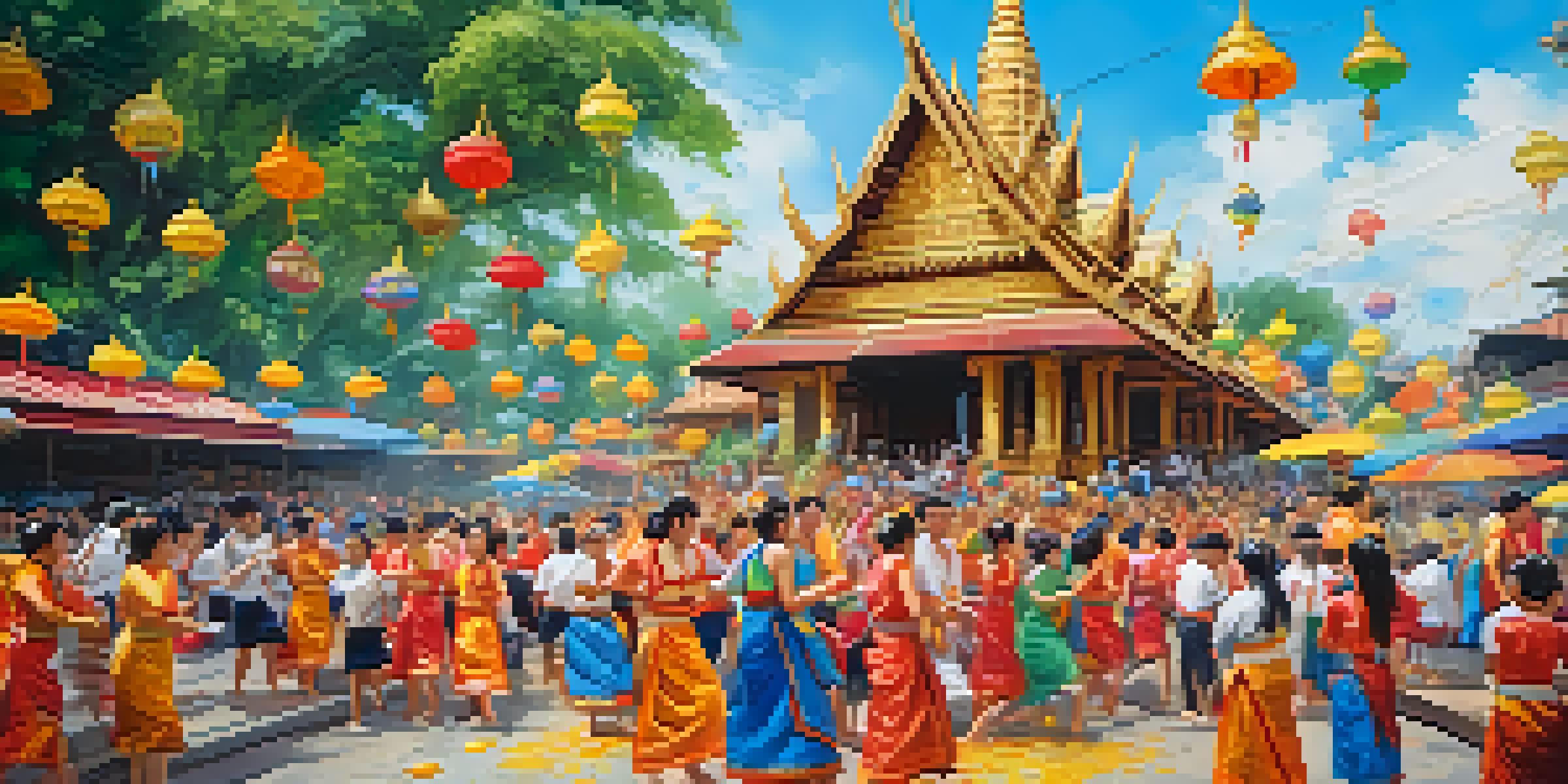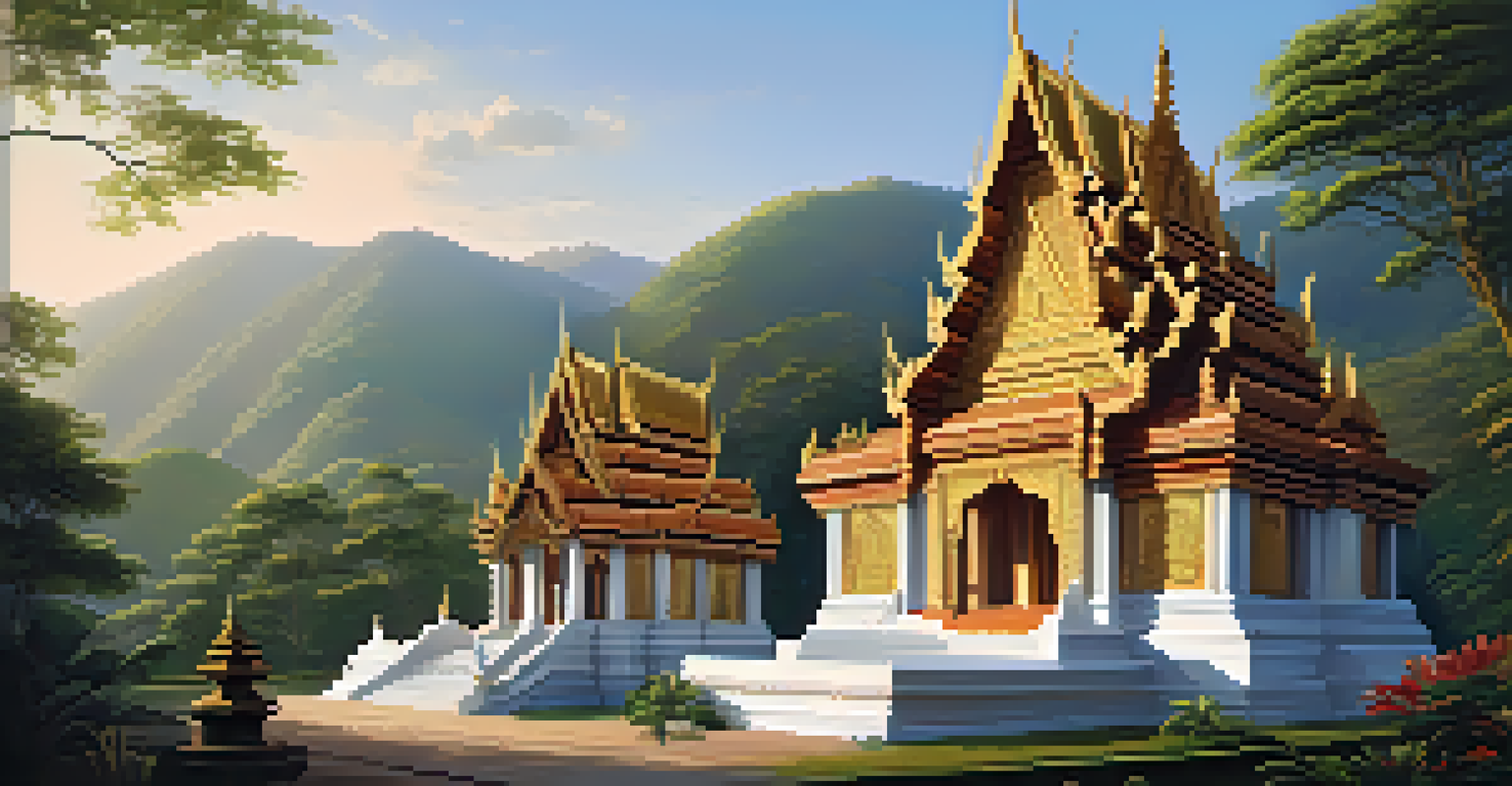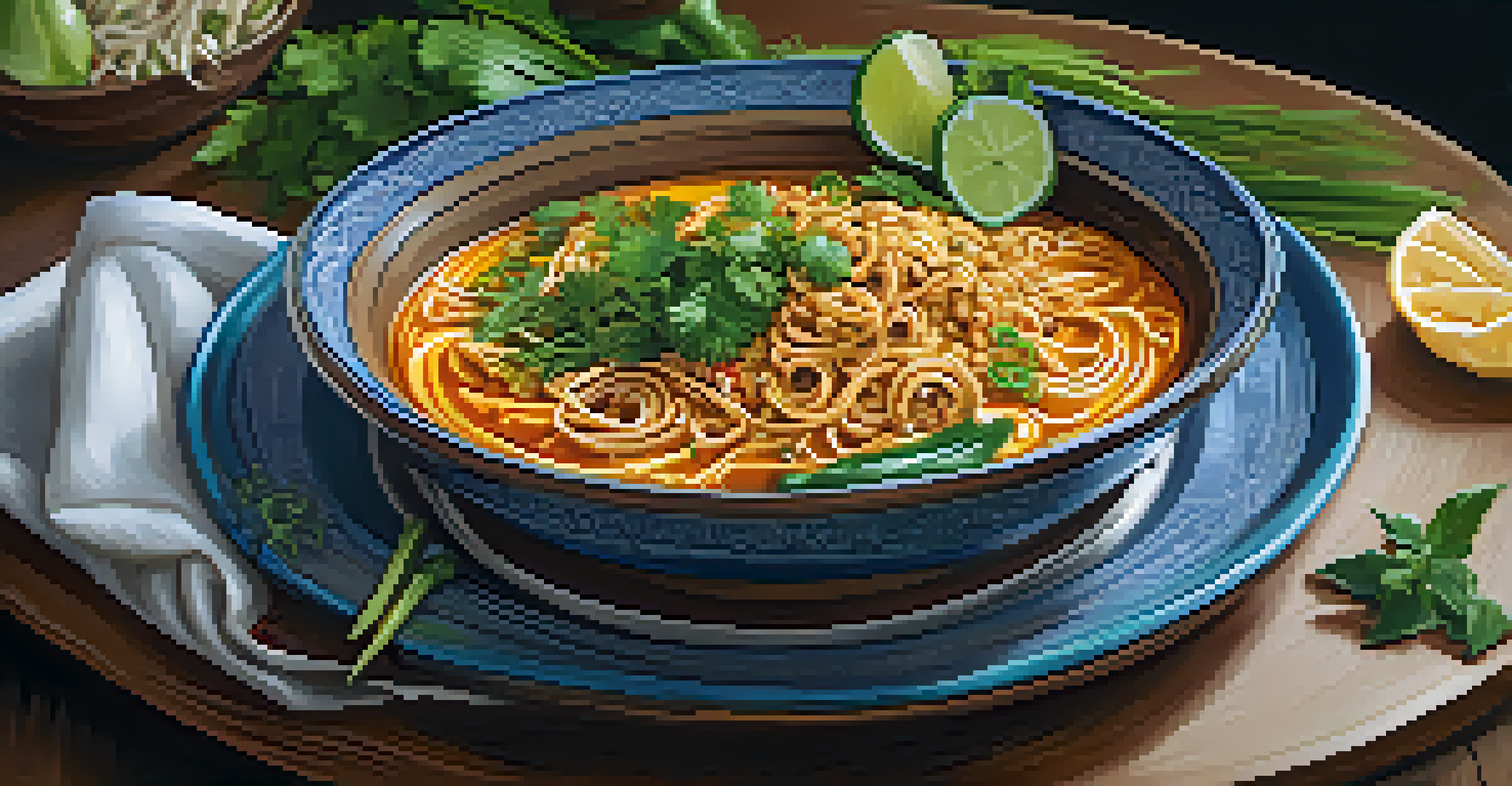Lanna Culture: Unraveling the Rich Heritage of Northern Thailand

Understanding the Origins of Lanna Culture
Lanna culture, rooted in the ancient kingdom of Lanna, thrives in Northern Thailand. This region, known for its lush mountains and fertile valleys, has been a melting pot of diverse influences for centuries. The Lanna Kingdom was established in the 13th century, becoming a hub for trade and cultural exchange with neighboring regions.
Culture is the widening of the mind and of the spirit.
Over the years, this unique culture has woven together elements from Thai, Burmese, and even Chinese traditions. As a result, Lanna has developed a distinct identity, evident in its language, customs, and arts. Understanding these origins helps us appreciate the depth of Lanna's rich heritage.
Today, the remnants of this historical kingdom can still be seen in its architecture, festivals, and local practices, making it a fascinating subject for both locals and visitors alike.
The Role of Religion in Lanna Society
Religion plays a pivotal role in Lanna culture, primarily influenced by Theravada Buddhism. Temples, known as 'wats,' are not only places of worship but also community hubs where people gather for festivals and ceremonies. The intricate designs of these temples often reflect the artistic flair inherent in Lanna culture.

Local beliefs and traditions are closely intertwined with Buddhist teachings, shaping daily life in the region. Rituals, such as merit-making and monk ordination ceremonies, are significant events that strengthen community bonds. This spiritual aspect is a cornerstone of Lanna identity, guiding moral values and social interactions.
Lanna Culture's Rich Heritage
Lanna culture, emerging from the ancient kingdom of Lanna, is a unique blend of Thai, Burmese, and Chinese influences that shapes its distinct identity.
Moreover, the annual Yi Peng Lantern Festival beautifully illustrates this connection, as thousands of lanterns are released into the sky, symbolizing the letting go of misfortunes and welcoming new beginnings.
Traditional Lanna Festivals and Celebrations
Lanna culture is vibrant and colorful, especially when it comes to its festivals. Celebrations like Songkran, the Thai New Year, and Loy Krathong showcase the region's rich customs and bring communities together. During these festivities, locals dress in traditional attire, participate in religious ceremonies, and engage in joyful activities.
Food is our common ground, a universal experience.
Each festival has its unique significance, often tied to agricultural cycles or religious observances. For instance, the Lanna-style Songkran involves unique water splashing traditions that symbolize purification and renewal. Such events not only preserve cultural heritage but also attract tourists interested in experiencing authentic Lanna traditions.
Through these celebrations, the people of Lanna maintain a strong connection to their history and culture, ensuring that these traditions continue to thrive for generations to come.
Lanna Cuisine: A Gastronomic Delight
One cannot discuss Lanna culture without mentioning its delicious cuisine, which is a true reflection of local life. Lanna food is characterized by its bold flavors, often utilizing fresh herbs and spices native to the region. Dishes like Khao Soi, a coconut curry noodle soup, and Sai Oua, a spicy sausage, are just a few examples of the culinary treasures found here.
Food in Lanna is not just about sustenance; it is an essential part of social gatherings and celebrations. Meals are typically enjoyed family-style, fostering a sense of community and connection among diners. The preparation of food is often a communal activity, where recipes are passed down through generations.
Role of Religion in Daily Life
Theravada Buddhism profoundly influences Lanna society, with temples serving as community hubs and traditional rituals reinforcing social bonds.
Exploring Lanna cuisine offers a delicious journey into the heart of its culture, where every dish tells a story of history, tradition, and local ingredients.
The Art and Craftsmanship of Lanna
Lanna culture is renowned for its exquisite craftsmanship and artistic expressions. Traditional crafts such as weaving, pottery, and silverwork highlight the skills passed down through generations. The intricate designs of Lanna textiles, often made with natural dyes, reflect the region's rich cultural narratives and beliefs.
Artisans in Northern Thailand take immense pride in their work, often blending age-old techniques with contemporary styles. This fusion has led to a revival of interest in traditional crafts, making them not only relevant but also highly sought after in both local and global markets. Each piece of art serves as a testament to the rich heritage and creativity of the Lanna people.
Visiting local markets and workshops provides insight into this vibrant craftsmanship, allowing visitors to appreciate the artistry and effort behind each creation.
The Language and Literature of Lanna
Language is a vital component of Lanna culture, with the local dialect, Kham Mueang, reflecting the region's unique identity. This dialect is distinct from Standard Thai and is an integral part of everyday life for many locals. Efforts to preserve and promote Kham Mueang are evident in schools and cultural programs, ensuring that future generations remain connected to their linguistic heritage.
Literature also plays a significant role in Lanna culture, with traditional stories and poems often passed down orally. These narratives convey moral lessons, historical events, and cultural values that shape the community’s identity. Festivals frequently feature performances of these stories, keeping the oral tradition alive.
Vibrant Festivals and Cuisine
Lanna's colorful festivals and bold cuisine reflect its cultural richness, bringing communities together and preserving traditions for future generations.
The importance of language and literature in Lanna culture underscores a deep connection to identity, history, and community, enriching the lives of those who embrace them.
Modern Influences and the Future of Lanna Culture
As the world evolves, so does Lanna culture, adapting to modern influences while striving to retain its unique identity. The rise of technology and globalization presents both challenges and opportunities for cultural preservation. Younger generations are increasingly exposed to global trends, yet many are enthusiastic about reviving traditional practices.
Community initiatives and cultural programs aim to educate locals and tourists alike about the significance of Lanna heritage. Workshops, festivals, and art exhibitions showcase traditional arts and crafts, ensuring that these practices are not lost in the face of modernization. This balance between tradition and modernity is crucial for the survival of Lanna culture.

By embracing both its roots and contemporary influences, Lanna culture has the potential to thrive in a globalized world, offering a rich tapestry of history, art, and community for future generations.